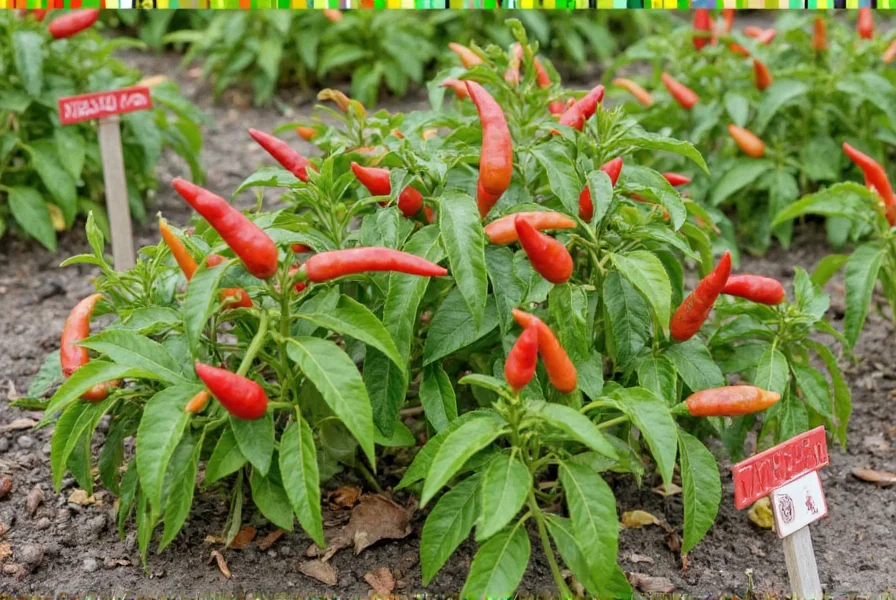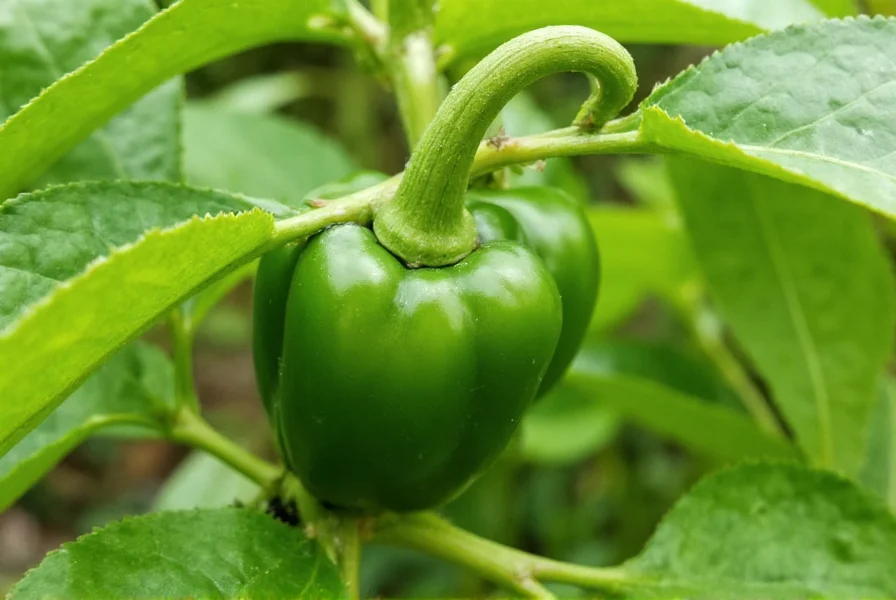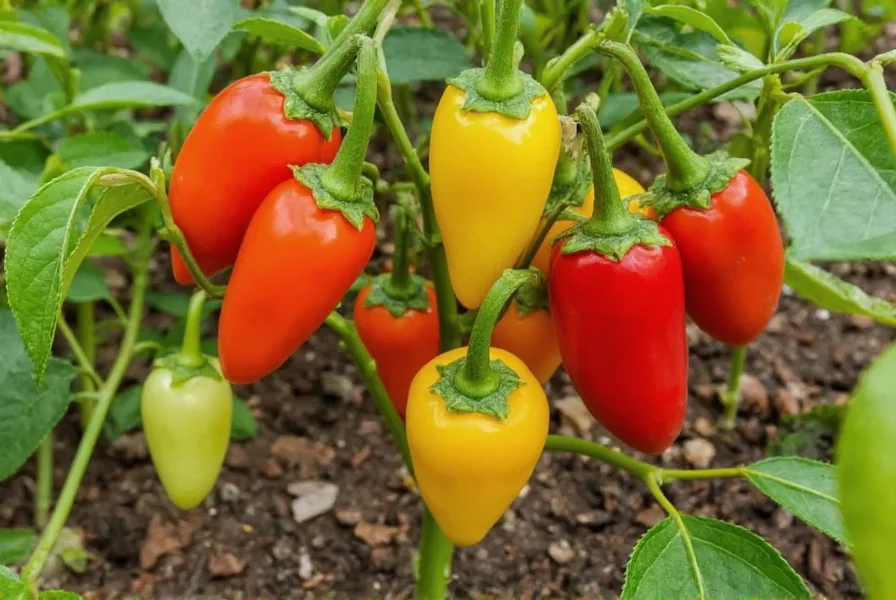Creating a thriving chili garden brings vibrant color, intense flavors, and satisfying heat to your homegrown produce. Whether you're working with a spacious backyard or a compact balcony, understanding the specific needs of chili pepper plants ensures a bountiful harvest. This comprehensive guide covers everything you need to know about establishing and maintaining a productive chili garden throughout the growing season.
Best Chili Varieties for Home Gardens
Selecting appropriate chili varieties forms the foundation of a successful chili garden. Consider your local climate, available space, and desired heat level when choosing plants. For beginners, jalapeños and serranos offer manageable heat with reliable yields. Gardeners seeking more intense flavors might try habaneros or Thai bird's eye chilies. If space is limited, compact varieties like 'Apache' or 'Prairie Fire' thrive in containers while still producing abundant fruit.

Soil Preparation Essentials
Chili plants demand well-draining soil rich in organic matter. Before planting, amend your garden soil with 2-3 inches of compost mixed to a depth of 8-12 inches. The ideal soil pH for a productive chili garden ranges from 6.0 to 7.0. Conduct a soil test to determine your starting point and adjust accordingly using lime to raise pH or sulfur to lower it. Raised beds work exceptionally well for chili gardens, providing superior drainage and warmer soil temperatures.
| Chili Variety | Days to Maturity | Heat Level (Scoville) | Space Requirements |
|---|---|---|---|
| Jalapeño | 70-80 days | 2,500-8,000 | 18-24 inches between plants |
| Habanero | 90-110 days | 100,000-350,000 | 24-36 inches between plants |
| Serrano | 75-90 days | 10,000-23,000 | 18-24 inches between plants |
| Thai Bird's Eye | 80-90 days | 50,000-100,000 | 12-18 inches between plants |
Planting Techniques for Maximum Yield
Timing your planting correctly makes a significant difference in your chili garden's success. Start seeds indoors 8-10 weeks before your last expected frost date. Transplant seedlings outdoors when daytime temperatures consistently reach 70°F (21°C) and nighttime temperatures stay above 55°F (13°C). Space plants according to their mature size—crowded plants compete for resources and develop more disease problems. When transplanting, bury seedlings slightly deeper than their nursery containers to encourage stronger root development. Water thoroughly after planting to eliminate air pockets around roots.
Watering and Fertilizing Schedule
Consistent moisture ranks among the most critical factors for a productive chili garden. Water deeply 1-2 times weekly rather than frequent shallow watering, aiming for 1-1.5 inches of water per week. Mulch with 2-3 inches of organic material to maintain soil moisture and temperature. During flowering and fruit set, slightly reduce watering to encourage fruit production—this mild stress signals plants to focus energy on reproduction. Fertilize monthly with a balanced organic fertilizer, switching to a low-nitrogen, high-phosphorus formula once flowering begins to support fruit development without excessive leaf growth.
Natural Pest and Disease Management
Healthy soil produces resilient plants less susceptible to common chili garden problems. Rotate crops annually to prevent soil-borne diseases. Companion planting with basil, marigolds, or garlic deters many pests naturally. For aphids and spider mites, spray plants with a mixture of water and mild soap early in the morning. Prevent fungal diseases by watering at soil level rather than overhead, ensuring good air circulation between plants, and removing affected leaves promptly. Neem oil serves as an effective organic treatment for many common pests when applied according to label instructions.

Harvesting for Optimal Flavor and Heat
Understanding when to harvest transforms your chili garden experience. Most varieties reach peak heat and flavor when fully colored—typically red, but sometimes yellow, orange, or purple depending on the type. Gently twist peppers from the plant or use scissors to avoid damaging stems. Harvesting regularly encourages continued production. For maximum heat development, allow peppers to remain on the plant until they reach full color maturity. Wear gloves when handling extremely hot varieties to prevent skin irritation. Store harvested peppers in a paper bag in the refrigerator for up to three weeks or freeze for longer preservation.
Troubleshooting Common Chili Garden Problems
Even experienced gardeners encounter challenges with their chili plants. Blossom drop often results from temperature extremes or inconsistent watering—maintain steady moisture and provide afternoon shade during heat waves. Yellowing leaves may indicate nitrogen deficiency or overwatering—adjust fertilization and check drainage. Small, misshapen fruit typically signals insufficient pollination—gently shake plants during flowering or attract pollinators with companion flowers. If plants stop producing mid-season, prune back one-third of the growth to stimulate new flowering branches and extend your harvest period.
Season Extension Techniques
Extend your chili garden's productivity with these simple techniques. In cooler climates, use black plastic mulch to warm soil early in the season. Wall o' Water plant protectors create a microclimate that allows earlier planting. As temperatures cool in fall, cover plants with frost cloth when temperatures dip below 50°F (10°C). Container-grown chili plants can be moved indoors near a sunny window for continued production. Many chili varieties continue producing until killed by frost, with some overwintering successfully in warmer zones for perennial production.
Frequently Asked Questions
When is the best time to plant chili peppers in my garden?
Plant chili peppers after your last frost date when soil temperatures reach at least 65°F (18°C). Start seeds indoors 8-10 weeks before last frost for earlier harvests. In warmer climates (zones 8+), plant in early spring for summer harvest or late summer for fall harvest.
How often should I water my chili garden?
Water deeply 1-2 times per week rather than daily shallow watering, providing about 1-1.5 inches of water weekly. Adjust based on weather—more during hot, dry periods and less during cool, rainy periods. Container plants typically need more frequent watering than in-ground gardens.
Why are my chili plants not producing many peppers?
Common reasons include inconsistent watering, improper fertilization (too much nitrogen), inadequate sunlight (less than 6 hours daily), or extreme temperatures. Ensure plants receive balanced nutrition, consistent moisture, and proper pruning to encourage fruit production.
What's the best way to store harvested chili peppers?
Store fresh peppers in a paper bag in the refrigerator crisper drawer for 2-3 weeks. For longer storage, freeze whole peppers on a baking sheet before transferring to freezer bags. You can also dry peppers by threading them on string or using a food dehydrator for year-round use.











 浙公网安备
33010002000092号
浙公网安备
33010002000092号 浙B2-20120091-4
浙B2-20120091-4